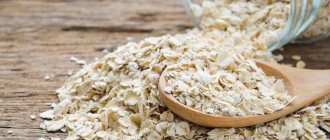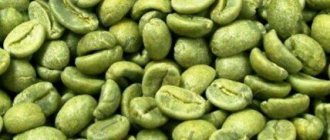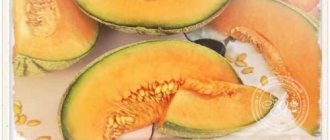A healthy lifestyle is becoming increasingly attractive to a wide segment of the population. It is inseparable from such a concept as proper nutrition, an integral component of which is cereals, including buckwheat.
It contains many different useful substances, but it has been proven that when cooked they are mostly destroyed and have no value for the body.
To get the maximum benefit, nutritionists advise not to boil, but to steam the buckwheat before eating, thereby leaving all the vitamins and microelements intact.
Boiled or steamed: which is better?
Doctors and nutritionists have long come to the conclusion that heat treatment of foods has a destructive effect on all the beneficial substances they contain. Buckwheat is no exception.
When cooked, the amount of plant fiber in grains is reduced almost threefold, and vitamins remain in minimal quantities. While steamed cereal contains them in full.
It is estimated that fiber in raw cereal is about 11 g per 100 g of kernels. When cooking porridge, the indicators drop to 4 g per 100 g. Thus, in order to replenish the body’s daily need for fiber (20-30 g), you need to eat 200-300 g of steamed cereal, while boiled cereal will need almost 3 times more - 600-900 g, which is unacceptable for those who eat buckwheat for weight loss. In addition, the increased calorie content does not allow us to consider such a dish as a dietary one.
Steamed buckwheat has a low glycemic index; after eating it, you retain a feeling of fullness for a long time, which makes it possible to use it for losing excess weight.
Cooking cereals easily and simply without cooking: how to steam buckwheat overnight and how it is useful
Buckwheat contains complex carbohydrates, which provide long-term saturation in one small portion.
It also contains B vitamins, nicotinic acid, amino acids, and is rich in iron, copper, phosphorus, manganese, calcium and other elements. However, the beneficial properties and nutritional value of cereals depend on the method of cooking. To preserve the greatest amount of valuable elements, nutritionists recommend not boiling buckwheat, but steaming it overnight.
Composition and calorie content
It is not for nothing that buckwheat is considered the queen among all other cereals. It has a rich vitamin and mineral composition. It widely contains group B, C, vitamin PP, iodine, plant proteins, amino acids, polyunsaturated fatty acids, choline, folic acid, rutin, minerals - magnesium, phosphorus, selenium, zinc, iron, silicon, manganese, potassium, copper, calcium.
This cereal contains a lot of plant fiber, which is vital for normal digestion, and therefore the full functioning of the whole body.
The protein content in 100 g of cereal is 12.6 g, fat – 3.3 g, carbohydrates – 62.1 g.
It has a low calorie content - buckwheat without cooking contains about 100 kcal per 100 g of product. However, after heat treatment, the number of calories triples - up to 300 kcal per 100 g of finished dish.
The benefits and harms of buckwheat for the body
Buckwheat is a unique product
Although buckwheat is often referred to as a popular grain, in fact it is not one, but is classified as a “pseudo-grain.” Buckwheat is a fruit seed, but because it contains many complex carbohydrates, it is often classified as a whole grain. This annual unpretentious herbaceous plant was brought from India. Buckwheat does not contain gluten, and its closest relatives are rhubarb and sorrel.
Buckwheat groats (kernels, prodel, flakes) are used in cooking. Buckwheat flour is added to baked goods, pancakes, and pasta.
In some countries, buckwheat leaves and shoots are eaten.
Unusual buckwheat recipes - HERE
.
The beneficial properties of buckwheat are entirely due to its components. In terms of its chemical composition, buckwheat is a valuable product that contains many important microelements.
Buckwheat also contains manganese, molybdenum, cobalt, nickel, titanium, selenium, iodine, silicon, sulfur, etc.
Buckwheat also contains a lot of vitamins: A, D, C, E, B1, B2, B3, B5, B6, B9 (folic acid), P (rutin), PP (nicotinic acid).
The amino acid composition of buckwheat is also rich. It contains the entire list of essential amino acids (those that are not synthesized in the human body, but come only with food): tryptophan, threonine, isoleucine, leucine, lysine, methionine, phenylalanine, valine, histidine.
100 g of raw buckwheat contains 330 kcal, proteins - 12.6 g, fats - 3.3 g, carbohydrates - 57.1 g, dietary fiber - 11.3 g.
Despite the benefits of this cereal, its use should be rational, since the energy value is quite high. You can assess the harm and benefits of buckwheat for a specific disease by consulting with a dietitian or nutritionist.
Where and how else are the beneficial properties of buckwheat used?
Buckwheat husks and seed shells of the grain are used as a hypoallergenic filler for children's orthopedic pillows and mattresses. Leaves and flowers of buckwheat are raw materials for the pharmaceutical industry. A unique drug, rutin (vitamin P), is extracted from them. In folk medicine, a healing decoction or infusion is made from buckwheat flowers and leaves.
How is buckwheat beneficial for the body?
Is buckwheat porridge healthy? Nutritionists recommend eating buckwheat 2-3 times a week to prevent various diseases of systems and organs.
- Heart health. Vitamins, microelements, fiber, polyunsaturated fatty acids and phospholipids contained in buckwheat collectively reduce cholesterol levels in the blood, regulate blood pressure, strengthen and increase the elasticity of the walls of veins and arteries, prevent the formation of blood clots and atherosclerotic plaques, reduce the risk of heart attack or stroke.
- Nervous system disorders. It is assumed that buckwheat helps improve the psycho-emotional state and normalize sleep. These effects are achieved due to the content of B vitamins, magnesium, manganese and the amino acid tryptophan. They participate in the natural production of the neurotransmitters serotonin and dopamine and soothe pain. This product is an excellent source of magnesium (100 g of cereal contains 231 mg Mg), which is very important for the functioning of the nervous system.
- Disorders of the gastrointestinal tract. The benefits of buckwheat for the stomach are as follows. Insoluble dietary fiber in buckwheat stimulates intestinal motility and promotes the growth and reproduction of beneficial microorganisms that inhabit the intestines. Organic acids in combination with magnesium and flavonoids help improve bile formation and bile secretion, stimulate the production of pancreatic juice. And phospholipids and amino acids help protect the liver. Soluble dietary fiber binds bile acids and removes them from the body naturally, thereby reducing cholesterol levels in the blood, which is extremely important in the prevention of cardiovascular diseases.
- Diseases of the musculoskeletal system. Buckwheat grain contains a large amount of minerals that help strengthen the bone-ligament system. These are calcium, phosphorus, silicon, copper, sulfur, zinc. In addition, some substances have a regenerating effect. These are carotenoids, flavonoids, vitamin E.
- Anemia. This is a condition of the body in which the level of hemoglobin in the blood decreases. Iron (6.7 mg per 100 g), B vitamins, rutin, manganese contained in buckwheat help prevent iron deficiency and B12 deficiency anemia. Despite the fact that iron is absorbed more efficiently from animal products, always remember the rule “the more varied the diet, the better.”
- Improving the condition of skin, hair and nails. Vitamins, microelements, rutin stimulate natural collagen synthesis.
- Boosting immunity, detoxification. During the period of colds, after an illness, it is useful to supplement the diet with buckwheat. In different forms, it is included in therapeutic diets (tables). Buckwheat helps cleanse the body of harmful substances, has an antioxidant effect, and increases the body's resistance.
- Blood sugar control. B vitamins, phospholipids, amino acids methionine, arginine and threonine help improve lipid metabolism and prevent the formation of fat deposits. Buckwheat is a source of resistant starch (that which is not converted into glucose in the intestines) and complex carbohydrates. They create a long-lasting feeling of fullness. Buckwheat is a good source of fiber with a low/medium glycemic index. This means that buckwheat is safe to eat for most people with type 2 diabetes. The load on the pancreas does not increase. In addition, again, it should be noted that buckwheat contains complex carbohydrates, so it raises and lowers sugar levels slowly, therefore, we feel alert and full longer and we are not tempted to overeat. Excess weight is a risk factor for the development of obesity, cardiovascular diseases and diseases of the musculoskeletal system.
The benefits of buckwheat for men
Buckwheat helps maintain male physical activity, increase endurance, and build muscle mass. The potassium, magnesium, phosphorus, calcium and vitamin E contained in buckwheat grains improve the functioning of the body's muscles. The amino acid arginine present in buckwheat stimulates the synthesis of muscle protein and also helps reduce fat deposits.
Buckwheat has a positive effect on blood circulation, strengthens blood vessels and the heart. Antioxidant properties protect men from diseases of the reproductive system.
The benefits of buckwheat for women
The mere presence of antioxidants and microelements in the composition helps improve the condition of hair and skin. In addition, buckwheat can prevent the development of varicose veins and strengthen bone tissue. It has a positive effect on the reproductive system. It is also recommended to use it in case of hormonal imbalances.
With age, a woman’s body experiences a decline in the hormonal function of the ovaries. Buckwheat is a good source of phytoestrogens; it can partially compensate for the lack of female sex hormones, thereby improving well-being.
The benefits and harms of buckwheat porridge for older people
In old age, special attention should be paid to the condition of the heart and blood vessels. The rutin component (vitamin P) acts as a vascular wall strengthener, iron helps normalize hemoglobin levels, and potassium supports heart function. It is also necessary to monitor blood sugar and cholesterol levels. Regular consumption of buckwheat porridge helps maintain the balance of these blood parameters. Is buckwheat good for sore joints? Definitely yes. The zinc and selenium present in cereals have a good effect on bone and joint tissues, which are subject to deformation with age. And rutin helps in the formation of collagen. But buckwheat porridge should be eaten without butter and sugar. Then the benefits of boiled buckwheat will be maximum.
Those with chronic kidney disease should eat buckwheat with caution. And, of course, this product should be limited in the diet according to the indications of the attending physician, if there are any contraindications.
The benefits of buckwheat for athletes and those who want to lose weight
Buckwheat, like other cereals, has a fairly high calorie content (330 kcal per 100 g). But, despite this, it is considered a “sports” and dietary product. Compared to other cereals, the fat and carbohydrate content in buckwheat is low, and the amount of protein is relatively high. This makes buckwheat, according to reviews from people leading a healthy lifestyle, a real superfood. Many athletes choose this product for “drying” muscles when they need to get rid of fat mass without losing muscle mass. Due to the content of polyunsaturated fats, buckwheat is useful for both sports and weight loss.
The benefits of buckwheat for athletes and those simply wanting to lose weight are significant. But you don’t need to use only it every day. Mono-diets pose a health hazard. Why neglect other nutritional components? This is unreasonable and even harmful. In addition to vegetable protein, animal protein is necessary for muscle development; it can be obtained from meat and fish. Vegetables and fruits are also rich in carbohydrates, fiber, minerals and vitamins. The diet of a person who cares about his health should be complete and balanced.
Read more about whether you can eat buckwheat every day HERE
.
The benefits of green and white buckwheat
First, let's figure out what the difference is between green, white and brown buckwheat. It's simple. Green buckwheat is buckwheat grain that has not been subjected to heat treatment. The main difference between white buckwheat is that it is briefly steamed before drying. Brown buckwheat, in addition to steaming, is also fried, so its color is more intense.
The benefits of green buckwheat for blood vessels are greater. The rutin content in it is higher, and it is the most valuable plant compound that helps strengthen the vascular and capillary network. There is 17 times more rutin in the shell than in the core. This is what gives buckwheat its green color. When the grain undergoes heat treatment, the buckwheat shell darkens and loses rutin. Therefore, the beneficial properties of white buckwheat will be higher than brown, but lower than green.
Is fried buckwheat healthy? Absolutely yes. Brown cereals are by and large no different from green cereals in terms of mineral, vitamin composition and nutritional value. Especially if you cook porridge from buckwheat (subject it to heat treatment). We will tell you further how to cook buckwheat correctly so that all the useful elements can be preserved to the maximum.
How to choose buckwheat correctly?
In stores you can find a wide range of this cereal:
- kernel – whole grain;
- prodel – crushed buckwheat, which cooks quickly and is suitable for making casseroles;
- flakes – flattened buckwheat kernels, used for quick preparation of baby porridges.
How to choose buckwheat in the store, read HERE
.
How to properly store cereals and flour - HERE
.
How to cook buckwheat for maximum benefit?
- Steaming. Of course, a minimally processed product is the most useful; it retains all micro- and macroelements. Therefore, it is worth paying attention to the method of steaming with water or milk, when the cereal is poured with hot liquid and left for an hour and a half, until it cools completely. You can try cooking buckwheat with kefir. To do this, raw washed cereals are scalded with boiling water, the water is drained and poured with kefir overnight. In the morning, a healthy breakfast is ready. You can add any fruits and berries to your taste.
- Soaking (followed by short cooking). Another way to prepare buckwheat with minimal processing. Place the washed grains in a saucepan and add cold water in a 1:1 ratio. Cereals soaked at room temperature swell and after a few hours are a semi-finished product that has retained all its nutrients. After soaking, you need to add a little more water and boil the cereal for several minutes, add salt. This side dish is ideal for meat, fish, chicken, mushrooms and vegetables.
- Boiling. To ensure that the cereal does not lose all its beneficial properties, it should be cooked for no more than 20 minutes. It’s better to reduce this time to 5–10 minutes, and then turn off the heat and cover the porridge with a lid and wrap it in a towel. Leave in such an impromptu bath for 1–2 hours. A multicooker is also suitable for this purpose.
- Roasting and baking. Fried and baked buckwheat is inferior to boiled buckwheat in terms of benefits. Frying involves a large amount of oil, which will increase the calorie content of the porridge. Baking is a long-term processing at high temperature. This cooking method will lead to loss of microelements and protein.
- Pastries, pancakes, pancakes. Of course, when buckwheat flour is added to the dough, the taste becomes more tart and the aroma becomes more spicy. But still, during prolonged heat treatment, useful elements are lost. Moreover, the presence of a large amount of sugar and fat in products does not make such food healthy and healthy. You should not eat such dishes often.
Why is buckwheat harmful and what are the contraindications?
There are no contraindications to consuming buckwheat. But you should not abuse this product, as there are some restrictions. For example, if you are prone to constipation and flatulence, it is not recommended to consume large amounts of fiber due to possible discomfort and bloating. But this only applies to buckwheat. In addition, people with impaired kidney function should not consume buckwheat more than 1-2 times a week.
Buckwheat and buckwheat flour are hypoallergenic products and therefore are often included in therapeutic diets.
But it is still possible for a food allergic reaction to this product to occur. Symptoms of buckwheat intolerance
:
- skin rash, itching, swelling;
- nausea, vomiting, diarrhea.
If an allergy occurs, you should consult a doctor for further treatment and observation. Most likely, you will need to take tests for allergens or do allergy tests. Buckwheat dishes may be prohibited during this period.
Follow the news, subscribe
mail.
When quoting this material, an active link to the source
is required
Useful and harmful properties
Like any product, buckwheat has both positive and negative properties.
Health Benefits
Steamed buckwheat has the following beneficial qualities for the body:
- helps replenish the deficiency of vitamins, macro- and microelements;
- due to its high fiber content, it helps improve digestion and eliminate constipation;
- has the ability to absorb and remove toxins and waste from the body;
- with regular use, it improves blood composition;
- has a beneficial effect on metabolism, speeds up metabolism;
- promotes the removal of harmful cholesterol from the body;
- normalizes blood sugar levels;
- has a beneficial effect on the cardiovascular system;
- helps prevent and fight atherosclerosis, hypertension, rheumatism, stomach and duodenal ulcers, gastritis;
- strengthens the walls of blood vessels, has a beneficial effect on the condition of the liver, kidneys and pancreas;
- strengthens the nervous system, improves sleep, eliminates insomnia;
- due to the low glycemic index, it is indicated for nutrition of patients with diabetes;
- promotes weight loss.
Harm to health
Undercooked buckwheat can bring not only benefits, but also cause harm in some cases.
First of all, it can cause indigestion, which will lead to bloating, diarrhea or, conversely, constipation.
This cereal should not be consumed if you have some diseases, as it can worsen the condition.
Long-term consumption of buckwheat alone can lead to decreased muscle tone, weakness, dizziness, and digestive problems.
Benefits of buckwheat soaked overnight
- Vitamin PP
is involved in redox reactions of energy metabolism. Insufficient vitamin intake is accompanied by disruption of the normal condition of the skin, gastrointestinal tract and nervous system. - Silicon
is included as a structural component in glycosaminoglycans and stimulates collagen synthesis. - Magnesium
is involved in energy metabolism, the synthesis of proteins, nucleic acids, has a stabilizing effect on membranes, and is necessary to maintain the homeostasis of calcium, potassium and sodium. A lack of magnesium leads to hypomagnesemia, an increased risk of developing hypertension and heart disease. - Phosphorus
takes part in many physiological processes, including energy metabolism, regulates acid-base balance, is part of phospholipids, nucleotides and nucleic acids, and is necessary for the mineralization of bones and teeth. Deficiency leads to anorexia, anemia, and rickets. - Iron
is part of proteins with various functions, including enzymes. Participates in the transport of electrons and oxygen, ensures the occurrence of redox reactions and activation of peroxidation. Insufficient consumption leads to hypochromic anemia, myoglobin deficiency atony of skeletal muscles, increased fatigue, myocardiopathy, and atrophic gastritis. - Cobalt
is part of vitamin B12. Activates enzymes of fatty acid metabolism and folic acid metabolism. - Manganese
is involved in the formation of bone and connective tissue, and is part of enzymes involved in the metabolism of amino acids, carbohydrates, and catecholamines; necessary for the synthesis of cholesterol and nucleotides. Insufficient consumption is accompanied by slower growth, disturbances in the reproductive system, increased fragility of bone tissue, and disturbances in carbohydrate and lipid metabolism. - Copper
is part of enzymes that have redox activity and are involved in the metabolism of iron, stimulates the absorption of proteins and carbohydrates. Participates in the processes of providing oxygen to the tissues of the human body. Deficiency is manifested by disturbances in the formation of the cardiovascular system and skeleton, and the development of connective tissue dysplasia. - Molybdenum
is a cofactor for many enzymes that ensure the metabolism of sulfur-containing amino acids, purines and pyrimidines.
Rules of use
Experts believe that in order to get the maximum benefit from steamed buckwheat, you need to eat it 2-3 times a week. It is advisable not to add salt or add sugar, so as not to increase calorie content. But if such a dish turns out to be too bland, you can add spices in small quantities.
It is advisable, along with buckwheat prepared in this way, to eat more vegetables, herbs, and unsweetened fruits. Take 300-500 g of cereal and up to 1 kg of fresh fruits and vegetables per day.
It is preferable to eat a portion of steamed buckwheat for breakfast, since after such a meal you feel full for a long time, which helps reduce your daily calorie intake and avoid snacking too much. However, if desired, you can consume steamed porridge at any time and several times a day.
Some nutritionists believe that buckwheat prepared in this way is best consumed in 6 meals. When steaming, it is enough to take a handful of cereal that fits in the palm of your hand. Eating such portions allows you to reduce stomach volume and reduce excess weight.
Is it possible to eat buckwheat while losing weight?
Today, one of the most popular ways to quickly lose weight is the buckwheat diet. What is the secret of her success and how accessible is she? Let's figure it out.
To begin with, this type of weight loss, unlike many others, not only does not harm the body, but, on the contrary, is a real first aid for it. After all, buckwheat is a true storehouse of vitamins and microelements that are so necessary for the body to function properly. And then, unlike many other diets, this one is not at all burdensome, since buckwheat has such a bright taste and smell that it can easily be eaten even without salt and spices.
In order to quickly and significantly lose weight in a short period of time, it is best to eat steamed buckwheat rather than boiled buckwheat. To do this, you need to pour boiling water over it in the evening and leave it to swell overnight. In the morning you will receive a complete porridge, which will differ from boiled porridge only in a much larger amount of useful substances.
You can add green onions or dill to the buckwheat - this will make the dish even tastier. For lunch, it can be used as a side dish for boiled veal or chicken breast. But it’s better not to eat buckwheat porridge at night - it simply won’t have time to be digested and instead of promoting weight loss, it will have the opposite effect.
You shouldn’t go overboard with such a diet either - it’s better to stay on it for no more than a week and no more often than once a month. Then you will achieve the maximum positive effect: you will lose excess weight and improve your body health.
Buckwheat with salt
Buckwheat with butter
Here we can already talk about additional calories, but also about additional health benefits. However, if you don’t snack on your porridge with whipped cream or half a cake, then, of course, you won’t gain weight.
It is best to season buckwheat with oil during the cooking process. If you want the porridge to turn into a real culinary masterpiece, shortly before turning it off, when all the water has already boiled away and been absorbed, add about a third of a stick of butter and cook in it a little more.
And in order to get a healthy, dietary and lean dish, it is quite acceptable to season buckwheat with vegetable oil, which can be added both during cooking and added to the ready-made porridge. Olive and grape oils are especially useful. The first is an inexhaustible source of omega acids and has a choleretic effect, and only one teaspoon of the second replenishes the body’s daily need for vitamin E, which is responsible for the beauty and health of our skin.
Buckwheat with mushrooms and onions
Boiled buckwheat is not only a dietary dish for weight loss, but also an excellent side dish. It goes especially well with mushrooms and onions. To prepare this tasty and lean dish, you must first boil the cereal. To do this, you need to sort it out, rinse it and fry it in a dry frying pan - this will give the future porridge a crumbly quality. The cereal must be poured into salted boiling water and cooked until it becomes soft enough and the water boils away. There is no need to stir the porridge during the process. Buckwheat in bags is also good for this dish.
While the cereal is cooking, you can start seasoning. To do this, you need to cut 1-2 onions (this depends on the expected quantity and your taste), and also wash the champignons. If they are large, then it is worth cutting them into 2 or 4 parts. It’s even better to use oyster mushrooms in this recipe - they have a richer mushroom flavor and delicate texture. Fry mushrooms and onions in a frying pan, adding a little vegetable oil. Use salt and spices to taste and desire. When the onions are browned and the mushrooms give out juice (it will become a kind of sauce when mixed with oil), remove the dressing from the stove and add it to the prepared buckwheat porridge, mixing thoroughly. Also choose the proportions to your taste, but anyone will say that the more mushrooms and onions in the porridge, the better.
How to steam correctly?
You can prepare healthy dishes from this cereal using different recipes. The main rule is that before steaming buckwheat, it must be thoroughly washed in several waters, and, if necessary, sorted out of small debris. The cereal must be clean. It is not recommended to fry it.
Water should only be boiled; raw hot tap water should not be used.
For the night
It is best to prepare a delicious healthy breakfast from the core, which will charge you with energy and relieve hunger for a long time.
To do this in the evening, before going to bed, you need to rinse 1 glass of cereal and pour 2 glasses of boiling water into it in an enamel container. Cover with a lid, wrap warmly and leave in a warm place until the morning. By this time, the buckwheat will swell and become airy, almost indistinguishable from the boiled product. You can lightly salt it or add a little sugar and eat it on an empty stomach.
Instead of boiling water, it is allowed to use hot or even cool boiled water, but in this case, the grains after infusion will be more dense and elastic.
At night with kefir
You can increase the benefits and improve the taste of cereals if you soak them not in water, but in fermented milk products, for example, kefir. This healthy dish will improve digestion and saturate the body with vitamins.
For those who want to lose excess weight, it is advisable to take kefir with low fat content; for everyone else, this factor does not play a big role. The main thing is that the fermented milk product is fresh. It is allowed to stand at room temperature and washed buckwheat is poured in in a 1:1 ratio.
After a few hours, the finished dish can be eaten. The duration of infusion is determined experimentally - it depends on the quality of the products, environmental conditions, and a person’s taste preferences.
You can add fruits or boiled dried fruits, berries, or vegetables and herbs to your porridge.
Kefir can also be added to ready-made buckwheat, steamed in water. However, such a dish will be higher in calories.
In a thermos
It is convenient to steam the cereal in a thermos - this way you can get a fluffy, crumbly porridge, in addition, the cooking time is reduced to 3-4 hours. You can take the finished dish with you to work or on a trip - in a closed container it keeps the temperature for a long time.
Pour buckwheat into a thermos up to half the flask, pour boiling water up to the neck and close tightly. To avoid problems with removing the finished product, it is better to use a container with a wide neck. In addition, instead of whole grains - kernels - you can use buckwheat.
Liquid buckwheat porridge on water
In some cases, people prefer to eat not crumbly porridge for breakfast, but a more liquid version, such as porridge-smear.
To prepare such a dish, you need to take more liquid so that the cereal cannot absorb all the moisture. Therefore, the grains need to be poured with boiling water in a ratio of 1:4, then after a few hours you can get a liquid dish. If you use kefir, you need to take 2 times more of it than cereal.
How long to cook buckwheat for garnish
Preparing a salad base or side dish is very simple. To ensure that the cereal remains crumbly and retains vitamins and minerals, you need to follow the step-by-step instructions.
How to quickly cook buckwheat
- measure the required amount of cereal, rinse several times under running water;
- heat in a hot frying pan for 2-6 minutes, this will allow the cereal to become crumbly;
- Pour the prepared grains into a saucepan, add water at the rate of 1 part cereal, 2 parts liquid;
- put on fire, after boiling, reduce to medium;
- After 10-15 minutes, the base is ready, you can season it with oil to taste or combine it with other ingredients - vegetables, sour cream, spices.
A simple recipe for buckwheat porridge
A distinctive feature of the porridge is its looser consistency. It goes well with mushrooms, meat, milk, and is suitable for dietary nutrition, as well as for the treatment and prevention of anemia.
- after the cereal is washed and dried, pour it with milk or water, the proportions are the same as in the classic recipe; if you want to make it more viscous, you need to add another 50 ml of water;
- As soon as the liquid boils, remove the foam with a slotted spoon, reduce the heat to low and cook with the lid closed;
- After 20 minutes, check readiness: when completely evaporated, the porridge should slightly stick to the bottom;
- if there is still liquid left, you need to turn off the stove, cover with a lid and wait another 15 minutes until the kernels absorb moisture and reveal all their taste;
- Add butter and chopped herbs to the prepared porridge.
Watch the video on how to prepare the very popular dish “Buckwheat in the Merchant’s Style”
Contraindications for use
Despite the fact that buckwheat without cooking is beneficial for the human body, in some cases its consumption should be reduced to a minimum.
First of all, this applies to people with diseases of the gastrointestinal tract, especially in the acute stage. A large volume of raw product can cause digestive upset and lead to dyspeptic symptoms.
This cereal has the ability to lower blood pressure, so people with hypotension should eat it with caution.
It is also better for persons with reduced blood clotting to limit the consumption of this porridge.
It is not recommended to include thermally unprocessed buckwheat in the diet of pregnant women and nursing mothers.
Therefore, before you start eating steamed cereal, it is better to consult a doctor or a nutrition specialist.
Buckwheat with kefir in the morning for weight loss (reviews and results)
For those who do not want to put up with excess weight, limit themselves to high-calorie foods and are friends with sports, eating raw buckwheat with kefir even just once a day (in the morning) will definitely help solve this problem and give joy.
According to doctors, even a daily diet with raw cereal on kefir on a fasting day, or a short-term one, will help not only lose a few extra pounds, but also significantly cleanse the body.
There are a large number of reviews about this diet. Most of those who followed this diet were satisfied with its results. Only the figures for the weight lost differed. Everyone confirmed the improvement in well-being, skin cleansing, ease of movement, etc.
There are many ways to prepare buckwheat. Some people cook it, others steam it with boiling water and leave it at room temperature under a tightly closed lid and then eat it throughout the day, washing it down with low-fat kefir. I offer a cooking option without heat treatment. And don’t worry, you can eat it this way. It's even delicious!
It is recommended to eat this breakfast in the morning on an empty stomach for 1-2 weeks, then you can take a break for several weeks and repeat again.
For effective weight loss and correction of sugar in the body, this product in the morning is not only a diet for a week or two, but also a hearty and healthy breakfast for life.
Ingredients:
- Kefir 300 ml
- Buckwheat 4 tbsp. l.
1. Prepare breakfast in the evening. Sort the grains and rinse well under running water. Place on a sieve and let all the liquid drain.
2. Place it in a jar, food container or any convenient container with a lid.
3. Pour 200 ml of kefir (1%) into it, close the lid and put it in the refrigerator overnight.
4. In the morning, add the remaining 100 ml of kefir. If desired, you can serve with fresh berries and a teaspoon of honey.
I really liked this diet. But I didn’t sit on buckwheat around the clock, but only in the morning. It is very filling and kept me feeling full until 3:00 p.m. Then I ate plenty of fruit. And for dinner at 18:00 salad.
My result is minus 4 kg in 2 weeks.
I remind you that before using recipes, always consult your doctor and nutritionist! Each organism is unique, so you need to be vigilant and careful. Take care of yourself!
Reviews
Anastasia, 38 years old, Vladivostok: “When diabetes was diagnosed, I had to dramatically change my diet. Many dishes have become unavailable, including the favorite buckwheat with stew. But the doctor advised not to cook, but to steam the cereal in boiling water, and boil the meat separately. When I tried it for the first time, I didn’t like the taste, but it outweighed the need to eat right. It was possible to reduce the sugar level almost to normal, in addition, several extra kilograms disappeared unnoticed.”
Maria, 53 years old, Krasnodar: “I am overweight, I tried a dozen diets, nothing helped, because I fainted from hunger. But a friend who managed to lose several kilograms shared her secret - eating steamed buckwheat. At first the taste seemed bland, but after such a breakfast you can not feel hungry for several hours, as was the case with other diets. I ate it every day, and as a result, I lost 7 kg in 2 weeks.”
Benefit
A diet based on steamed buckwheat is effective because it saturates the body for several hours. Slow carbohydrates take a long time to digest, which helps you avoid overeating. Buckwheat diets are followed for no more than three weeks, during which 3-4 fasting days are carried out.
For steaming, not only dry cereals are used, but also green buckwheat. It is not recommended to add salt during cooking. Water or kefir is used as a base, since milk increases the calorie content too much.
Doctors recommend a buckwheat diet for the following pathologies:
- diabetes;
- liver diseases;
- anemia;
- disorders of the heart and blood vessels.
In addition, steamed buckwheat helps remove toxins, strengthen hair and nails, and improve skin condition.
Buckwheat recipe with kefir to lower blood sugar
Diabetes mellitus is a disease characterized by high blood sugar due to a malfunction of the endocrine system and a lack of insulin. Insulin is a protein produced by the pancreas. It is responsible for processing sugars (starch, sucrose) by breaking them down into glucose and simple sugars that can be processed by cells.
In people with type 1 , the pancreas does not produce insulin and they become insulin dependent.
Most diabetics (about 90%) have type 2 , which is a relative deficiency of insulin produced by the pancreas. As a result, cells of insulin-dependent tissues (liver, fat and muscle) lose their ability to absorb blood glucose and are deprived of the basic source of energy. At the same time, the level of glucose in the blood increases, and obesity occurs.
To maintain acceptable blood glucose levels, patients must constantly eat dietary foods that contain complex carbohydrates . They slowly break down and gradually, rather than abruptly, saturate the blood with glucose. Such products include all cereals (except semolina), bran, mushrooms, pumpkin and all vegetables (except potatoes).
Research by nutritionists and endocrinologists has confirmed that buckwheat, which has long been famous for its beneficial properties and is called the “queen of cereals,” is indispensable in the daily diet of diabetics. The high content of fiber and complex carbohydrates allows you to smoothly saturate the blood with glucose and maintain its level within normal limits. The amino acid (arginine) contained in cereals stimulates the production of insulin by the pancreas.
The medicinal recipe for preparing buckwheat porridge differs from the standard one:
- In the evening, sort out one glass (250 ml capacity) of green “live” kernels, rinse with cold water, discard in a colander, pour into an enamel saucepan, pour 500 ml of boiling water, cover with a lid and wrap well.
- In the morning, an unusually tasty medicinal product will be ready for use. Use 5-8 tbsp at one time. spoons of porridge and be sure to wash it down with kefir with a fat content of 1%. The amount of kefir is limited to 1 liter per day.
Eating this product should be fractional - 5-6 times a day, but no later than 4 hours before bedtime. Course – 2 weeks.
You can repeat it in a month. Before use, consultation with your doctor is necessary.
Buckwheat with kefir is a very simple and effective diet. Works wonders!
The problem of excess weight in humans has now become a large-scale one. It should be understood that excess weight is not the norm, but a pathology dictated by problems with the functioning of human internal organs. It is necessary to lead a healthy lifestyle: eat right and exercise. An excellent starting point for weight loss is the diet of raw buckwheat with kefir, which definitely “works wonders.” Nutritionists highly recommend it and consider it the easiest (without the debilitating feeling of hunger), simple, inexpensive and effective.
The trick of a unique, very healthy product - whole grains - is that it contains a large amount of complex carbohydrates. They are slowly gradually absorbed by the body and this is what gives a feeling of fullness for a long time. In addition, its kernels, softened with kefir, due to the presence of a large amount of dietary fiber, gently cleanse the gastrointestinal tract and the entire body of accumulated waste and toxins.
Attention! Always consult your doctor and nutritionist before using recipes!
The fermented milk product kefir contains vitamins A and B, proteins, a lot of calcium, cleanses the body of fat metabolism products, improves digestion and metabolism.
The combination of these two nutrient-rich ingredients creates a delicious medicine without side effects.
The kefir-buckwheat diet can be strict, gentle, and on fasting days.
Strict diet:
If you are on a strict diet, you need one glass, rinsed with boiling water and drained in a colander, pour the cereal into an enamel saucepan, pour three glasses of 1% fresh kefir, mix well, cover and place on the bottom shelf of the refrigerator overnight. Delicious “lazy” porridge will be ready to eat in the morning. It is necessary to mix it well, roughly distribute it into 4-5 doses per day.
Eat the largest part of your diet in the morning on an empty stomach. You should drink the porridge with green tea without sugar or clean water without carbon. The fluid requirement for this diet is at least 2 liters per day.
Before going to bed, you can drink a glass of kefir; the milk amino acid it contains (tryptophan) is very useful and has sedative properties.
This diet is recommended by nutritionists for no more than 7 days. Weight will decrease by 5-6 kg.
You need to exit such a diet smoothly and, in order to maintain the achieved result at the same level, minimize fatty, sweet, flour, fast foods in your diet and indulge in sports and hula hoops. This diet can be repeated only after 2-3 months.
Gentle:
A gentle diet is breakfast on an empty stomach and dinner with porridge prepared in the same way from three tablespoons of buckwheat and one glass of kefir. Lunch and snacks can be replaced with citrus, kiwi or a green apple, and before bed - a glass of kefir.
This diet is recommended for 10 days. When followed, a person’s excess weight is also significantly reduced.
You can use the diet as part of proper nutrition - only once a day in the morning on an empty stomach, have buckwheat and kefir for breakfast, then eat according to the established regime, excluding high-calorie foods.
This diet is recommended for 2 weeks, weight decreases by 4-5 kg.
Fasting day:
A strict diet for one fasting day per week is also highly recommended by nutritionists.
In practice, it has been confirmed that buckwheat in combination with kefir really “works wonders.”
Choose a diet in consultation with your family doctor and lose weight for health!











